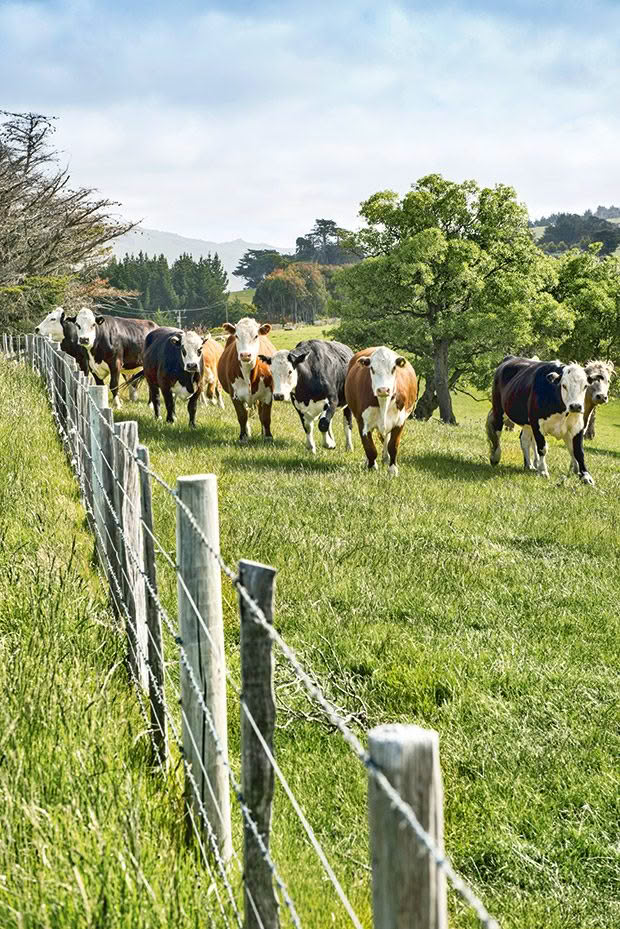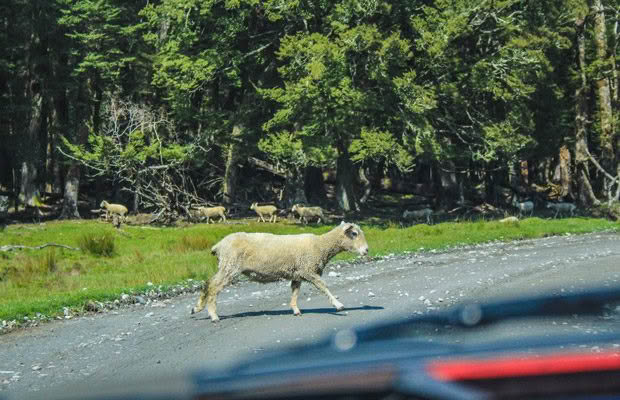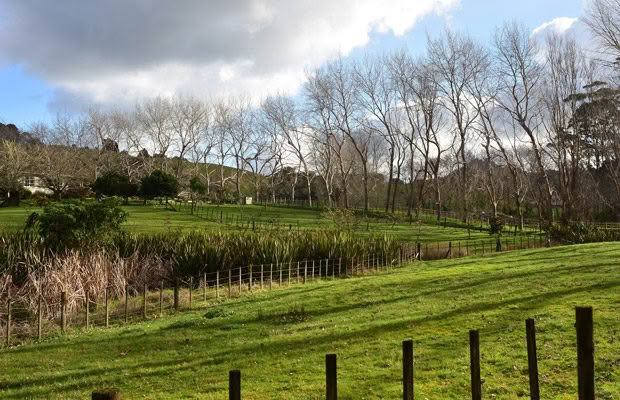How to be a good country neighbour — the ultimate guide to rural etiquette

Understanding rural etiquette can make for a more peaceful life on the block.
Words: Sheryn Dean
When you live in town, you have a lot of neighbours close by, but you may only get to know one or two. Country living is different. It’s often a tighter community, even though you physically live a lot further apart.
There are a few reasons:
– most of us have animals, and animals often don’t respect boundaries;
– you may share a water supply;
– your surface water may drain onto their block, or theirs onto yours;
– you’re affected by their plantings, or they are by yours;
– you’re probably going to live next to them for a long time – the average length of block ownership is just over seven years.
Neighbours & stock
If you only have a few animals, it may make sense to work in with your neighbour and:
– share a ram, bull, buck, or boar;
– build shared yards on the boundary;
– go halves in a pack of drench;
– share the cost of the shearer.
If you see stock in obvious distress or without water, call your neighbour to let them know. Do this before interfering. A situation can quickly get worse, particularly with newborns, where well-meaning intervention can be detrimental. Only intervene if you can’t locate the owner or the situation is urgent.
If wandering stock comes onto your property, call the owner to remove them and insist they be secured. If you can’t find the owner, call Animal Control for advice. You have every right to impound stock on your property, but you must care for them, and make attempts to find and notify the owner (or Animal Control if the owner is unknown). You do have legal recourse to charge for feed, care, and claim for any damage.
Stock on the road
In the past four years, wandering stock on the road has caused four deaths, 46 serious injuries, and 202 minor injuries. Always drive on rural roads at a speed where if you need to, you can stop in half the visible distance. That’s often not the speed limit.
It’s your legal responsibility to contain your stock by ensuring the integrity and adequacy of road-side fences. Carefully secure gates opening onto the road; I use chain and a combination lock to discourage trespassing, and also because I’ve yet to see a cow open one with its tongue.

If you see stock – anyone’s stock – on the road, don’t drive past and leave it. Ever. If you see any animal on the road, anytime, anywhere, herd it off the road immediately. The next person coming round the corner may not be as lucky.
Sheep and goats will usually scatter at the sound of an approaching vehicle, but other animals may stand their ground. Hitting a pig is like driving into a brick wall. A larger animal can destroy a car and seriously injure or kill someone if it goes through the windscreen.
Turn on your hazard lights to warn other traffic while you move stock into the nearest paddock. It doesn’t matter whose stock they are or whose paddock it is, so long as the animal is off the road. If possible, choose an empty paddock, and call in at the nearest house to let them know what you’ve done.
Also, call Animal Control, in case an owner or the landowner calls them. If you can’t move the stock, or it’s not safe to, call 111 if it’s urgent; if not urgent, 0800 4 HIGHWAYS (0800 44 44 49), the local council, or *555 and report it.
Neighbours & dogs
Think carefully before getting an athletic, intelligent working dog such as a collie, blue heeler, or huntaway. These types of dogs need a lot of exercise and stimulation every day. Bored or unhappy dogs tend to roam; dogs with a buddy or in a pack often act like predators, even if they are usually friendly dogs.
Once a dog learns to ‘worry’ stock, it’s tough to break the habit. A landowner has the right to destroy a dog if it’s worrying stock. A dog owner can be fined up to $3000 and is also liable for any damage caused.

Always ensure your dogs are secure at night and know where they are during the day. Having good relations with your neighbours and your phone number on your dog’s collar means you’re more likely to get the call before Animal Control. If your dog does cause a problem, take responsibility, be apologetic, and do everything you can to ensure it doesn’t happen again.
If you find a strange dog on your property, check its collar for a phone number or call around your neighbours to see if they know who owns it. You can also take it to a vet to check for a microchip. If you can’t locate an owner or can’t keep the dog contained, call your local council.
Neighbours & shelter
It’s logical to want to plant some big trees on your southern boundary as a windbreak. But your southern boundary is your neighbour’s northern boundary, and you’ll be shading their land.
Legally, landowners have no right to a view. But consider how you’d feel if someone blocked out one of the loveliest aspects of your block?
There are plenty of options that will give you privacy without causing distress to your neighbours. A good windbreak can be a win-win situation. The best ones filter the wind and don’t have to be high. Instead of something like an old-fashioned, very tall, solid hedge of Japanese cedar, try low maintenance alder trees under-planted with flax. You’ll get shelter from the wind, privacy, winter sun, and keep your neighbour happy.
If you’re considering planting hedging trees on a boundary, ask your neighbour if they’ll allow access for pruning. If it’s a problem, set the trees back off your boundary fence, leaving enough room for branches to spread and still allow for a large tractor to gain access.
Neighbours & water
It’s your responsibility to manage stormwater on your property; you can’t just install a drain that runs to the neighbour’s boundary. If there’s an existing or natural drain to a watercourse coming onto your property, you can reasonably expect to utilise it. However, if you widen it, increasing the volume, you’re affecting the downhill neighbour so discuss it with them first. Some extra work may be required to accommodate excess water flow.
Water runs over land too. This natural overland flow path must be maintained. If you’re doing earthworks on your property, be aware of how this will affect the surface flow. While it might make sense to build your driveway up so it doesn’t get muddy in winter, it might dam the flow from the neighbour’s paddock.

If what you’re planning could hinder or increase water flow, you’re responsible for how it will affect the neighbouring properties. Talk to your neighbours before doing anything as adverse effects may not be evident from your side of the fence. Sometimes it can be as simple as including an extra drainage pipe or doing some remedial work on their side of the fence.
Neighbours & fences
You and your neighbour are each 50 percent liable for an ‘adequate’ boundary fence. Generally, this is a standard 7-wire stock fence, but you can agree on anything. For example, if the fence runs through a flood plain, it could be a 3-wire electric fence. If you can’t agree, there’s a legal process to follow.
Legally, fences must be adequate to keep your stock contained. If you choose to have goats, pigs, or bulls, a 7-wire fence isn’t going to be sufficient. Trespassing stock destroying the neighbour’s garden will upset them, and you’re legally liable for any damage.
Hotwires help, decreasing wear and tear on a fence. However, I’ve had a bull jump a 7-wire battened boundary fence with an eighth hot wire along the top. Some farmers use outriggers. These can increase the height of a fence and widen it so stock on either side can’t touch each other. Nose-to-nose contact can spread contagious diseases such as Mycoplasma bovis and Bovine Diarrhoea Virus (BVD).
Keep in communication with your neighbour. If you can work it, rotate when you graze boundary paddocks to avoid contact. If trees or stock damage or destroy a boundary fence, it’s the owner’s responsibility to repair it.

A neighbourhood approach to pest control is far more effective than doing it alone.
Neighbours & pest control
Rabbits, possums, rats, and wasps don’t care about boundaries. If you have a problem, it makes sense to take a combined approach to fight pests. Talk to your neighbours; the more who join in, the more effective an eradication effort will be.
Don’t use open bait containers or bait that can cause secondary poisoning. A dying animal may make it next door before it dies, and you don’t want to poison or harm beloved pets inadvertently. Take care when doing pest control, and let neighbours know if you’re using something that could place pets at risk.
Neighbourhood support
If there isn’t one in your area, consider starting up a neighbourhood support group. It’s an excellent way to:
• formalise a network;
• get to know your neighbours;
• reduce local crime.
It can also be essential in an emergency. Find more resources here: neighbourhoodsupport.co.nz.
Love this story? Subscribe now!
 This article first appeared in NZ Lifestyle Block Magazine.
This article first appeared in NZ Lifestyle Block Magazine.
